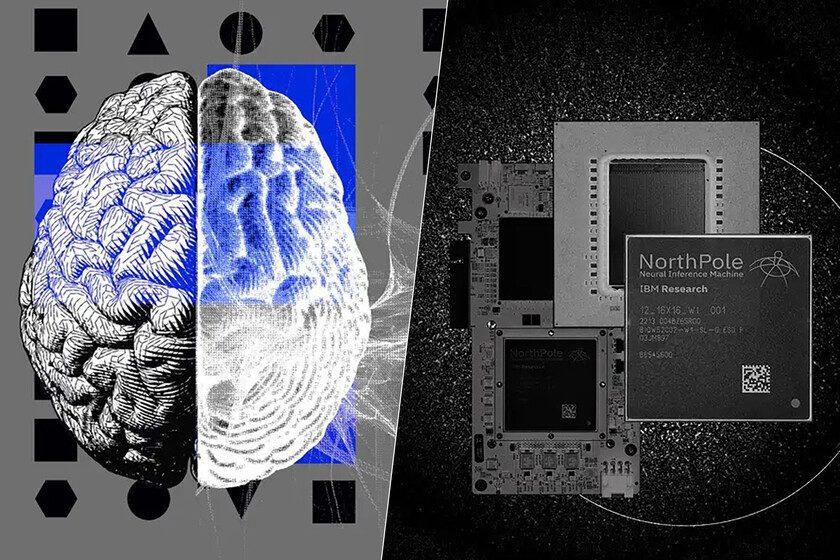We are witnessing live what some figures like Bill Gates believe is “the era of artificial intelligence“. We certainly have plenty of reason to believe that this is the case. Since the launch of ChatGPT last November, the world has been racing to launch more and better algorithm-based products.
Now, the fundamental element of this revolution is hardware. NVIDIA, as we’ve seen, has been the big winner so far, but many other companies also want their piece of the pie. IBM can become one of them because it has managed to develop a chip whose efficiency surpasses “any other available on the market”. We’ll see.
IBM’s efficient AI chip
The creators of Deep Blue explain that their new chip, called NorthPole, is inspired by the human brain. This is a design that represents a different structure to that commonly used in computing, where data is processed and stored in separate units, leading to the Von Neumann bottleneck.
For the past several years, IBM has been working on an architecture that dramatically reduces operating time and energy and solves the Neumann problem. “Architecturally, NorthPole blurs the line between computing and memory,” says Dharmendra Modha, principal investigator of the project at IBM Research.
We’re looking at a chip made on a 12nm process that has 256 cores and can perform 2,048 operations per core per cycle with 8-bit precision. Plus it has potential double or quadruple number of 4-bit and 2-bit operations. Since it has integrated memory, its efficiency is enormously scalable compared to other chips.
IBM claims that using the ResNet 50 image classification network as a benchmark, the NorthPole is “significantly more efficient than conventional 12nm GPUs and 14nm CPUs”. But the promise doesn’t end there. They also say their chip outperforms “leading architectures” even those using advanced 4nm nodes.
The new NorthPole is a direct successor to TrueNorth, the company’s first chip inspired by the human brain. It should be noted that at the moment this technology will continue in the IBM labthough they note that it could be ideal for tasks related to autonomous cars, personal assistants, spatial computing and robotics.
Images: IBM
In Xataka: Getting lost with AI was Apple’s biggest potential mistake in years. They try to fix it with money

